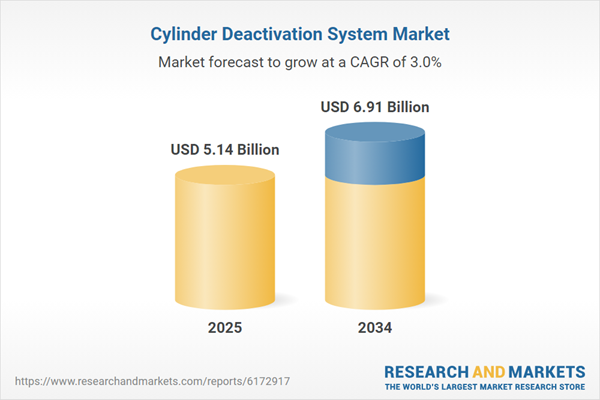Gasoline Vehicle Engine Segment to Account for a Substantial Market Share of the Global Cylinder Deactivation System Industry
In gasoline engines, cylinder deactivation is often used at high power to provide cylinder displacement when needed. This improves the efficiency of the gasoline engine. Prior to entering the engine cylinder, gasoline is mixed with air in a gasoline engine. Companies are now adopting cylinder deactivation in V4 engines to meet pollution standards, which was formerly reserved for larger engines with V6 or V8 volumes. The adoption of fuel-saving technology such as high-compression engines with cooled exhaust gas recirculation, stop-start systems, and cylinder deactivation increases with the acceptance of naturally aspirated gasoline engines, which are projected to play a key role in the US market. Cylinder deactivation system is primarily designed for gasoline engines that are naturally aspirated. These factors are expected to significantly contribute to the growth of the segment.
The Asia-Pacific to Provide Significant Growth Opportunities to the Cylinder Deactivation System Industry
Geographically, North America account for a significant share in the cylinder deactivation system industry due to the rising demand for light commercial and gasoline vehicle in the region. Meanwhile, the Asia-Pacific is expected to experience a robust growth in the forecast period since the region is witnessing an expansion of a well-established supply chain network serving the shipbuilding, automobile, and heavy machinery industries, which is driving increased vehicle demand. Additionally, the presence of numerous automotive manufacturers in the region is another factor contributing to the market growth in the Asia-Pacific. This, in turn, is expected to drive the cylinder deactivation system industry in the region.
Cylinder Deactivation System: Market Segmentation
Cylinder deactivation is the process of deactivating some of the cylinders in an internal combustion engine when the engine's full power is not needed. Cylinder deactivated system improves fuel economy while also lowering carbon dioxide emissions. As a result, cylinder deactivation essentially reduces fuel injection for some cylinders by closing the engine's intake and exhaust valves.By component, the market is divided into:
- Valve Solenoid
- Engine Control Unit
- Electronic Throttle Control
Based on number of cylinders, the market has been segmented into:
- 4 Cylinders
- 6 Cylinders and Above
The market has been categorised based on valve actuation method into:
- Pushrod Design
- Overhead CAM Design
On the basis of fuel type, the market has been bifurcated into:
- Diesel
- Gasoline
Based on vehicle type, the market can be segmented into:
- Passenger Vehicle
- Light Commercial Vehicle
The regional markets for cylinder deactivation system include:
- North America
- Europe
- Asia-Pacific
- Latin America
- Middle East and Africa
The global cylinder deactivation system industry is expected to be driven by an increase in demand for vehicles with more power. More cylinders in an engine equals more power. A cylinder deactivation system is installed in vehicles to allow for the deactivation of a few cylinders while the engine is running. The rising consumer disposable income in emerging countries is also enhancing the sales of vehicles. In addition, the government is imposing strict rules for emissions, which is leading to the increased demand for fuel efficient vehicles, thus, aiding the market. Over the forecast period, the growing adoption of cylinder deactivation system vehicles and the thriving naturally aspirated gasoline engines are expected to significantly contribute to the industry growth.
Key Industry Players in the Global Cylinder Deactivation System Market
The report presents a detailed analysis of the following key players in the global cylinder deactivation system market, looking into their capacity, market shares, and latest developments like capacity expansions, plant turnarounds, and mergers and acquisitions:- Delphi Technologies
- Schaeffler AG
- Robert Bosch
- Eaton
- Continental AG
- Valeo
- Others
Table of Contents
Companies Mentioned
The key companies featured in this Cylinder Deactivation System market report include:- Delphi Technologies
- Schaeffler AG.
- Robert Bosch
- Eaton
- Continental AG
- Valeo
Table Information
| Report Attribute | Details |
|---|---|
| No. of Pages | 174 |
| Published | August 2025 |
| Forecast Period | 2025 - 2034 |
| Estimated Market Value ( USD | $ 5.14 Billion |
| Forecasted Market Value ( USD | $ 6.91 Billion |
| Compound Annual Growth Rate | 3.0% |
| Regions Covered | Global |
| No. of Companies Mentioned | 7 |









